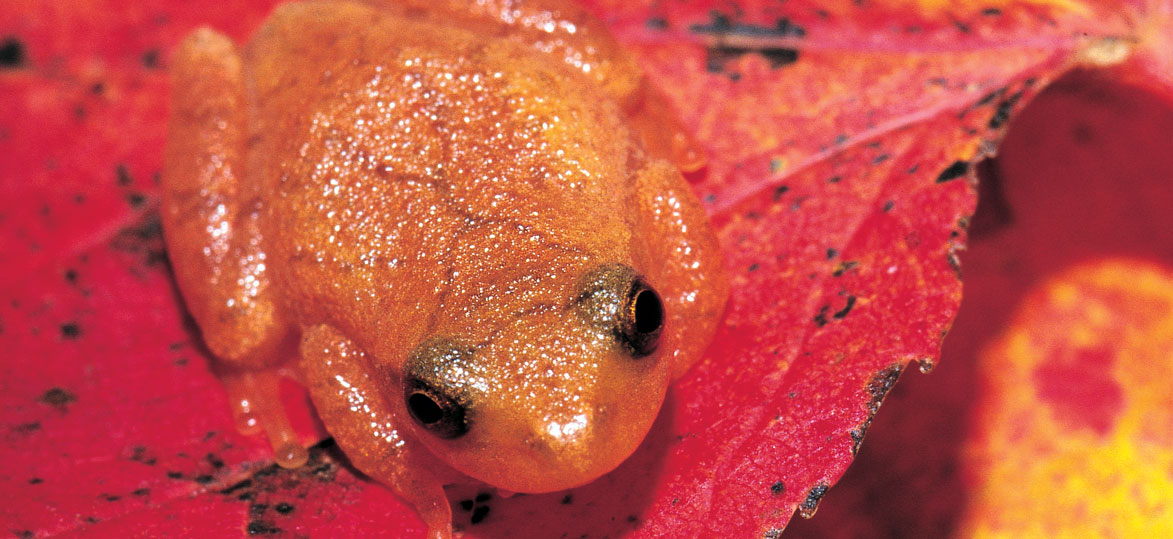
The Spring Peeper (Pseudacris crucifer) is one of Vermont's smallest frogs. Peepers fill their vocal sacs with air until they look like a balloon, then they let out a "peep" as they release the air. Its call can either be a short ascending whistle or it may be broken into a series of ascending peeps.
Adults are generally 1 to 1-1/2 inches long. Spring Peepers have no dorsolateral ridges. They have dark markings on their back that usually form an "X", and small adhesive discs on their toes. Spring Peepers vary in color from light to dark brown. Adult males are generally smaller than the adult females, and breeding males have black throats and swollen thumbs.
Habitat
Adults can be found in herbaceous vegetation or woods next to heavily vegetated swamps and marshes of all sizes. In the winter, they hibernate under logs or behind loose bark on trees, waiting for the spring thaw and their chance to sing.
Reproduction
After mating in water, they lay hundreds of eggs singly or in packages of two to three eggs attached to vegetation. Tadpoles metamorphose within two to three months.
Diet
Spring Peepers are nocturnal predators, eating mostly small invertebrates.
Management
The Spring Peeper population has been mapped throughout the state, and benefits from Fish & Wildlife Department habitat conservation efforts.
Status
Spring Peepers are very common in Vermont.
